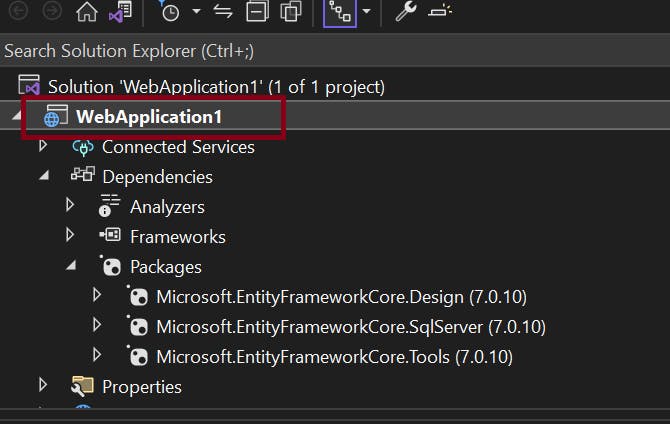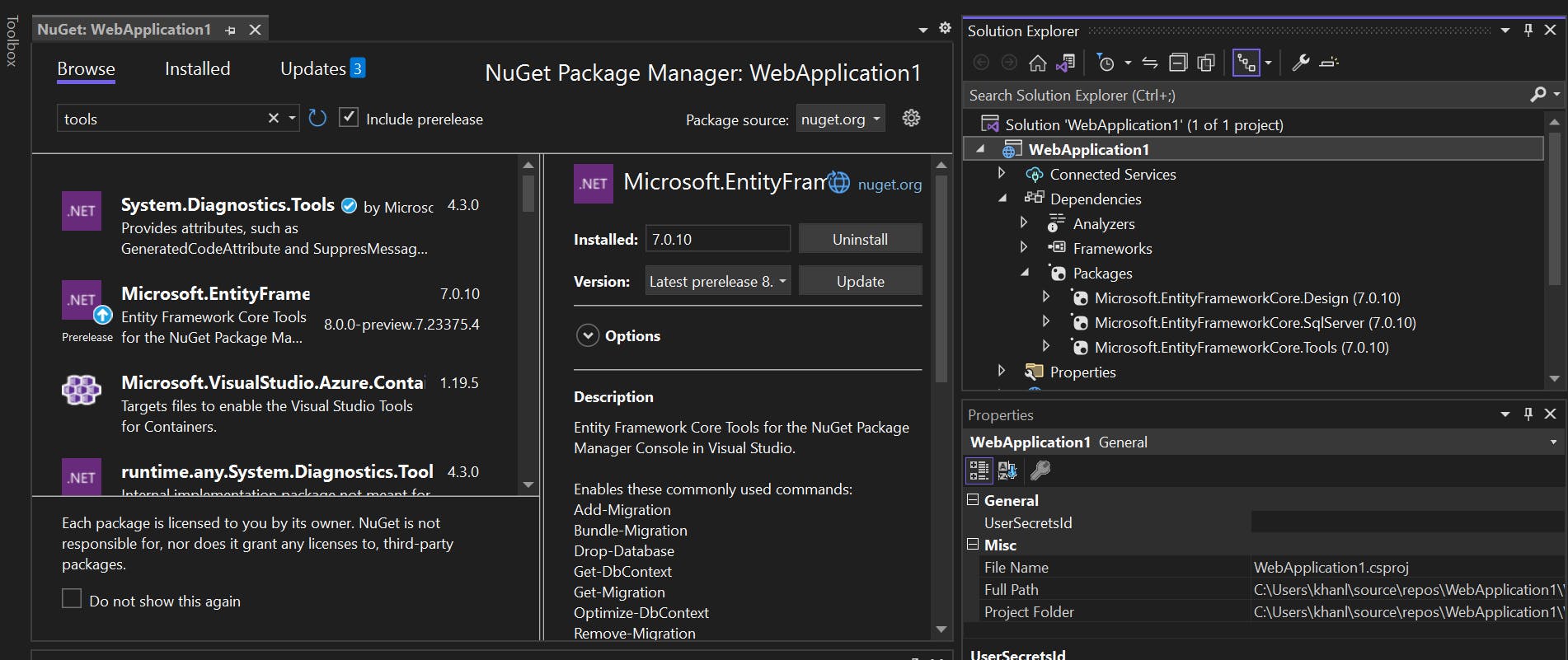How To Install Entity Packages in .Net Projects
Setting Up Entity Framework in Your Project
Introduction:
When developing a project that interacts with a database, Entity Framework (EF) proves to be an invaluable tool. It streamlines the process of making database migrations and establishing connections with SQL Server. This guide will walk you through the steps to install and set up Entity Framework in your project.
Install Entity Packages First

To install these packages in your project you have to follow the steps given below:
Step 1: Install Entity Packages
Begin by right-clicking on your project's name.
From the context menu, select "Manage NuGet Packages."
In the NuGet Package Manager, explore and download the necessary dependencies for Entity Framework.

The Importance of Installing the Package:
Installing these packages brings two significant benefits to your project:
Migrations Made Easy: Entity Framework provides powerful tools to manage database migrations seamlessly. This feature proves indispensable when your project's data structure evolves over time.
Simplified Connection: Installing the package simplifies the process of connecting your project to a SQL Server database. This connection is the foundation of storing and retrieving data efficiently.
Step 2: Download Dependencies, Go To Manage NuGet Packages.
To download the required dependencies, navigate to "Manage NuGet Packages."
Search and identify the specific packages that align with your project's needs.
Download the selected dependencies, ensuring that your project is well-equipped to fulfill its requirements.

Step 3: Install Desired Dependencies
With the necessary packages acquired, proceed to the "Manage NuGet Packages" section.
Browse the available packages and identify the ones that align with your project's design and functionality needs.
Download and install the chosen dependencies, enhancing your project's capabilities.

Discussion :
Why is Package Installation Crucial?
Tools for Migration and Beyond: The primary reason to install Entity Framework packages is to leverage tools that facilitate database migration. These tools enable you to smoothly transition your database schema as your project evolves.
Streamlined Design: Entity Framework not only provides functionality but also contributes to your project's design. Its visual tools empower you to create and modify entities in a visually intuitive manner.
Seamless SQL Server Interaction: The packages also optimize your project's interaction with SQL Server. This is paramount for executing command-line operations to install or update the EF Core SQL Server provider.
Conclusion:
Installing Entity Framework packages offers a multi-faceted advantage. It equips your project with tools for database migrations, enhances its design capabilities, and optimizes its connection with SQL Server. By following the steps outlined in this guide, you're on the path to a well-structured, efficient, and powerful project.